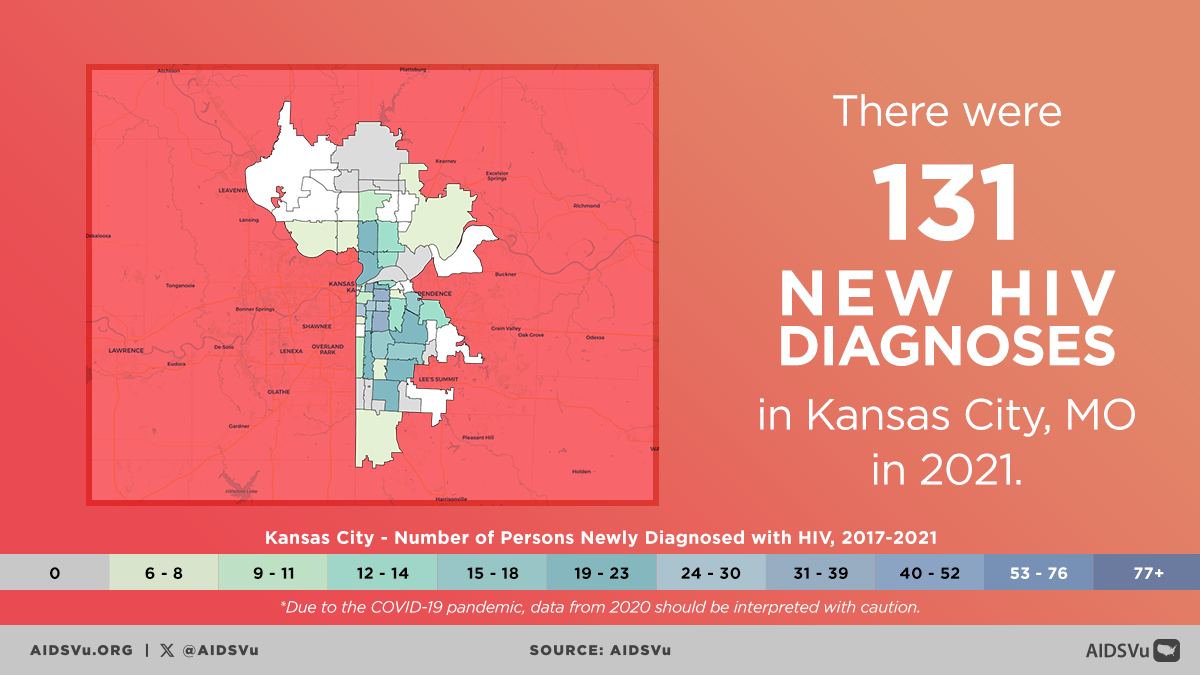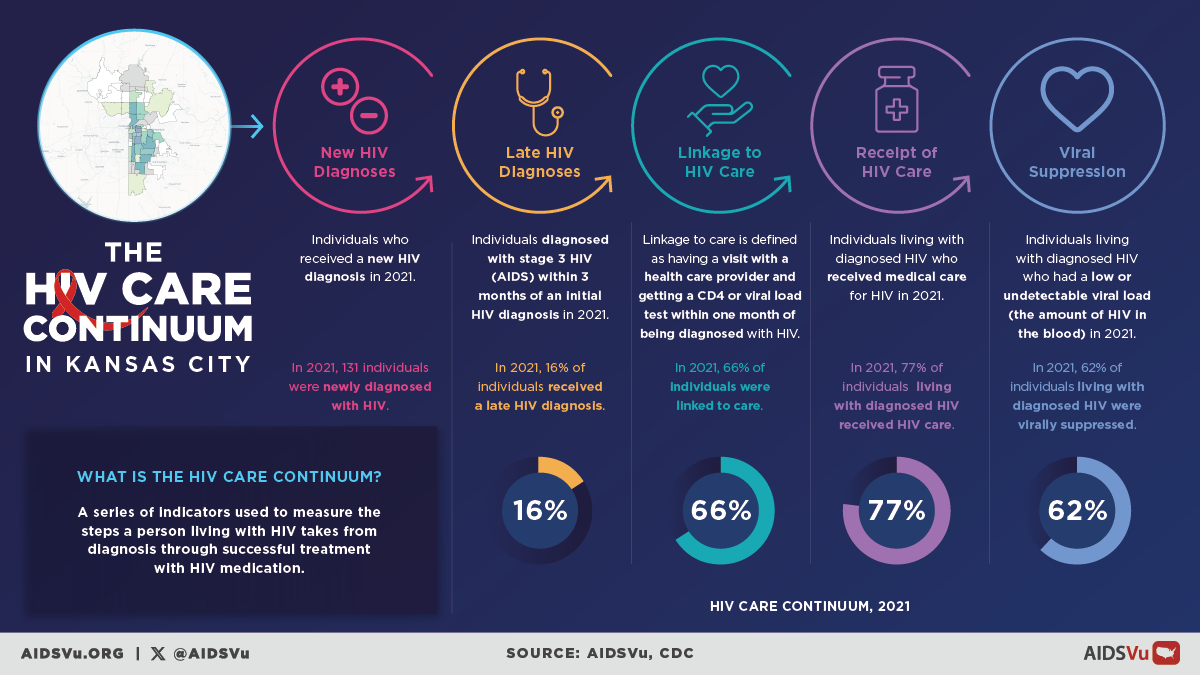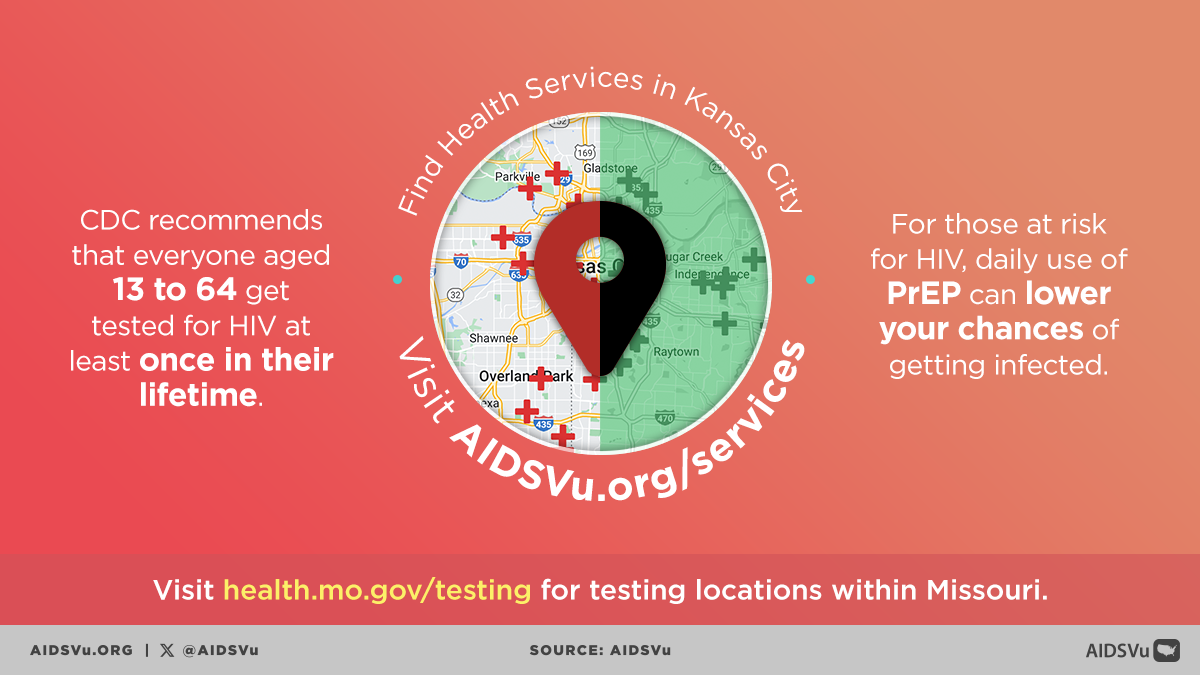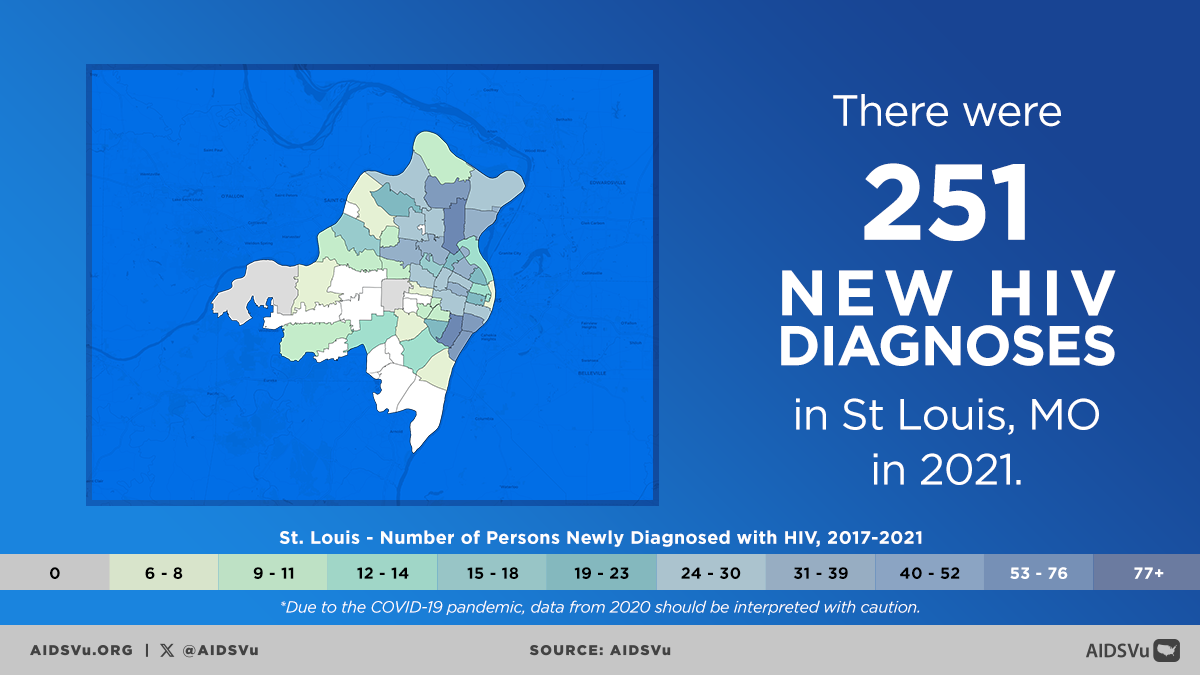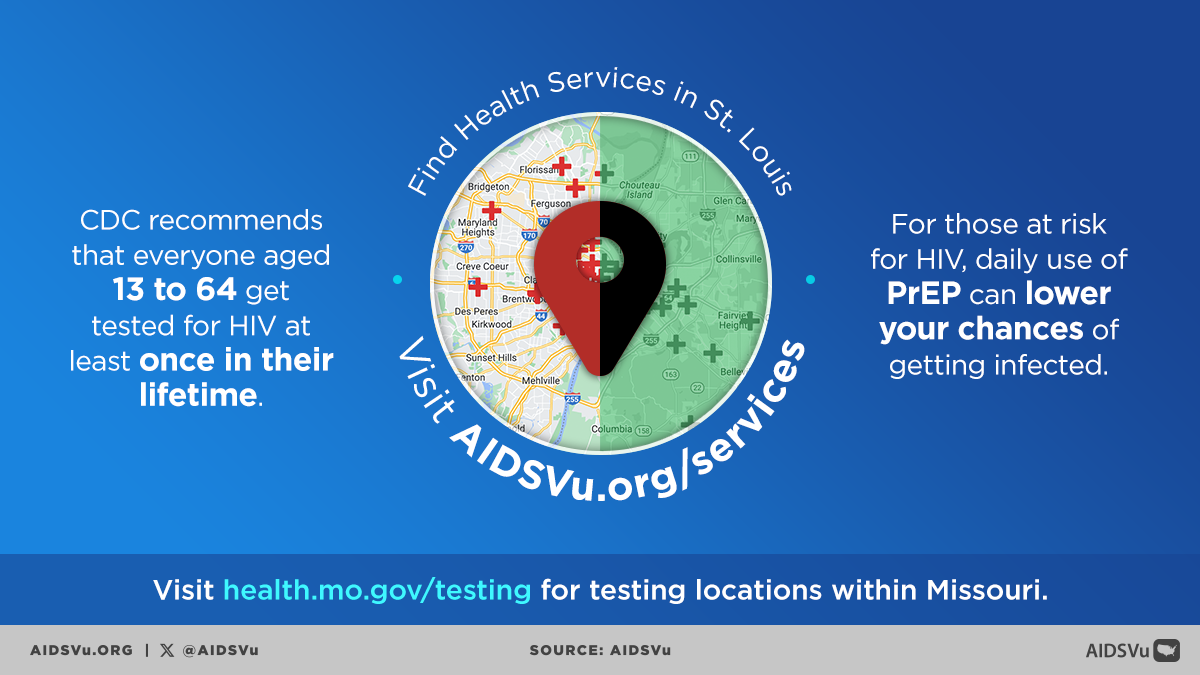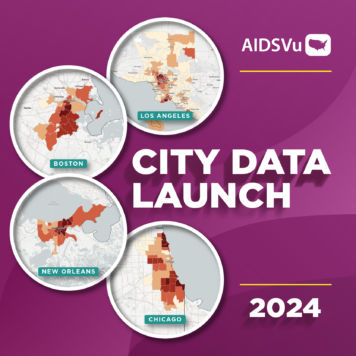AIDSVu has released new ZIP Code-level data from 2021 that highlights how the HIV epidemic impacts cities throughout the U.S. This year’s city launch includes two new cities—Kansas City and St. Louis, MO—as well as detailed data on over 50 cities across the country. These city-level data maps and profiles now include 2021 HIV care continuum data, including late HIV diagnoses, linkage to HIV care, receipt of HIV care, and viral suppression statistics at a fine geographic level.
Use our sample social media posts and infographics below to share these new city-level data with your networks.
Sample Social Posts
- According to new @AIDSVu data, Black Americans in St. Louis represented 62% of new #HIV diagnoses, compared to 26% for White Americans and 8% for Hispanic/Latinx individuals. Learn about the disproportionate impact of HIV in cities across the U.S. here: https://aidsvu.org/local-data/#/cities
- @AIDSVu just released city-level profile pages detailing 2021 #HIV care continuum data for more than 50 cities across the U.S. Explore #HIV in your city here: https://aidsvu.org/local-data/#/cities
- On @AIDSVu, city-level data for #HIV prevalence and new diagnoses can be compared to social determinants like poverty and education in maps. Check out new city-level maps here: https://aidsvu.org/local-data/#/cities
- @AIDSVu’s new city data includes two new cities, Kansas City and St. Louis, MO. View updated local #HIV data for your city here: https://aidsvu.org/local-data/#/cities

